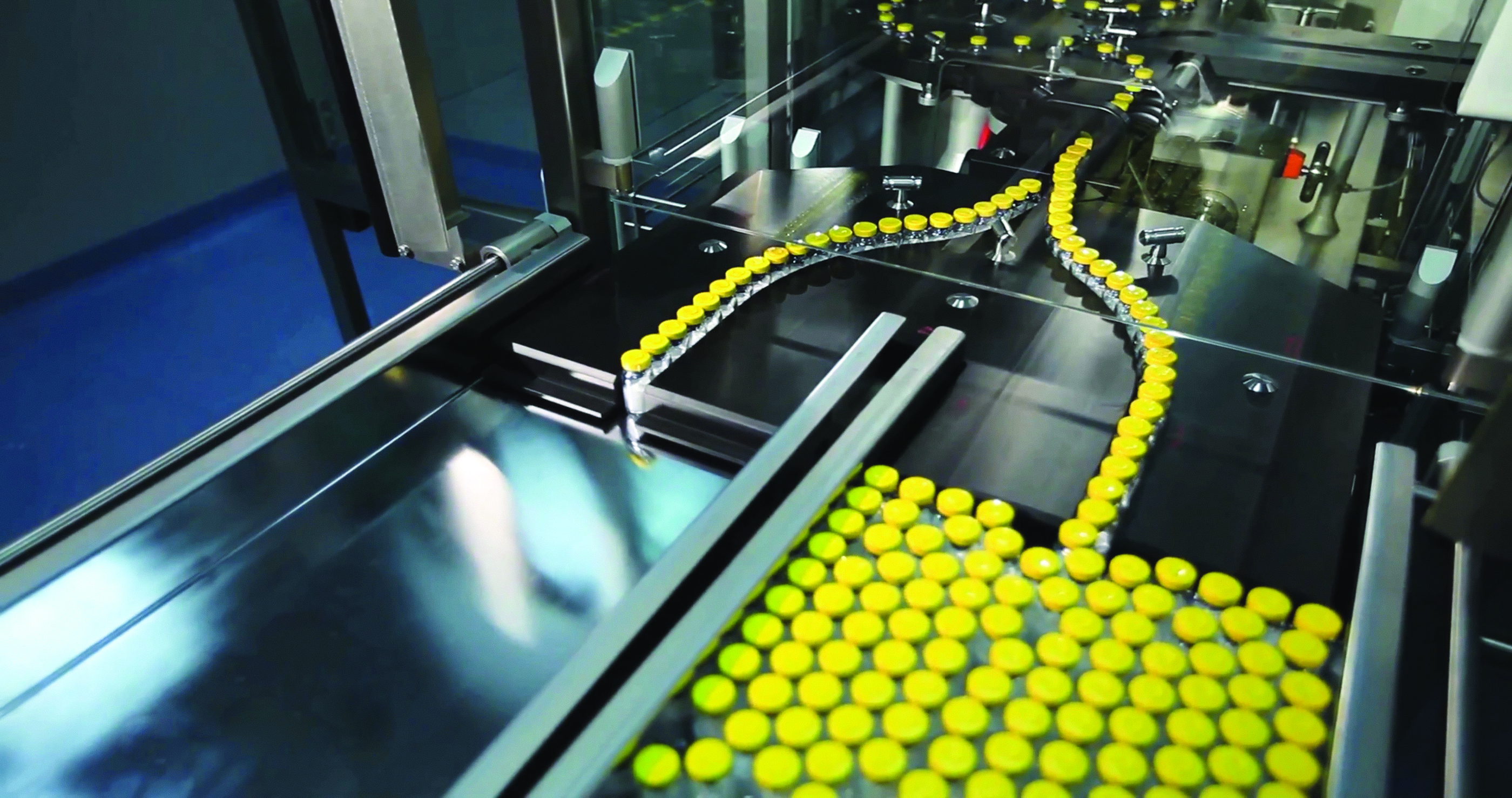Biopharmaceuticals have become a major part of the world’s pharmacopoeia. Biologic drugs of all kinds have taken centre stage and are now mainstream enough that consumers know them by their brand name. Competition, societal expectations, pricing, commoditisation and regulatory compliance lead the long list of concerns that are pressuring the industry to turn to bioprocessing capacity. That demand is also attracting billions of dollars in finance — funds that are accelerating research and development, filling pipelines and, importantly, investing in the processing capacity that the industry needs to supply the market.1
Biopharma’s manufacturing modus operandi remains heavily wedded to batch methods, with commercial process precedents being set in the lab; but, during the last 15 years or so, most drug manufacturers have come to understand that this is not a sustainable strategy.2 Evidence continues to mount that major pharmaceutical manufacturers are steadily adopting and integrating more modern processing and manufacturing concepts into their day-to-day operations.
Nice Insight’s 2017 Pharmaceutical Equipment Survey queried nearly 600 highly qualified pharmaceutical industry professionals from 90 companies involved in specifying and purchasing new equipment, systems and related technologies.3 The survey asked those with purchasing authority specifically about spending and the trajectory of their budgets, with 73% reporting an increase from 2014 to 2016.
Study responses revealed that 64% had an interest in purchasing both upstream and downstream processing equipment. Among respondents, 41% of those manufacturing oral solid dose forms indicated an interest in purchasing process automation software and 39% expressed an interest in computer or automation systems. Another 36% were seeking manufacturing execution system (MES) software and 35% were interested in process simulation and systems validation software. Lastly, 34% were interested in acquiring computer integrated manufacturing software.
Industry 4.0
Those manufacturing automation software, control and information technologies mentioned in Nice Insight’s research are all tools used to create advanced information-driven manufacturing environments. Such a fully connected real-time data-sharing production environment has been described as “Industry 4.0,” a visionary manufacturing strategy that many players in commercial manufacturing and industrial processing are actively aspiring to achieve.4
Companies are adopting automation and data managing technology to advance their competitiveness.5 Surveying 1100 executives across all industries, including 24% representing pharmaceutical manufacturers, Zebra Technologies found that the number of 'smart factories' is expected to double by 2022. The migration, said the company, is predicated on the proven ability of Industry 4.0 manufacturing environments to provide increased visibility across operations that promote growth and ensure quality.5
There is a complex set of economic and technical drivers helping to accelerate pharma’s adoption of advanced manufacturing. At the forefront are regulators who, through nearly three decades of policy making, have been steering the industry to adopt current good manufacturing practices (cGMPs) to secure the industry’s future.6 From a quality standpoint and a structural and financial perspective, the US Food and Drug Administration (FDA) understands that society won’t achieve affordable, reliable access to safe medications without a state-of-the-art manufacturing infrastructure.
Achieving automated success
For biopharma, the path to Industry 4.0 may have fewer turns and barriers because drug development is fuelling more capacity, engineered from the start to be flexible and incorporate the latest process automation and data-rich operational controls. Nevertheless, the industry is asking the equipment and engineering communities to step up and provide the advanced processing and manufacturing technologies they need to succeed. Regarding advanced manufacturing techniques, biopharmaceutical drug developers are asking their suppliers to develop more continuous processing technologies. In the recent 13th Annual Report of Biopharmaceutical Manufacturing, for example, what the survey respondents wanted equipment suppliers to concentrate their R&D efforts on most was cited as downstream continuous processing.7

In practice, biopharmaceutical companies are cultivating growth by advancing their processing capabilities and upping quality by applying automation and data collecting technologies in ways that fit their operations best. A 2016 whitepaper presented by Bio-Rad described the company’s adoption of an automated, multidimensional (Multi-D) chromatography system to replace the cumbersome, complex and hands-on manual sequential chromatography system. For Bio-Rad, implementing automation in this area reduced purification times from days to hours.8
Bioprocessing and manufacturing experts agree that continuous processing will be an elemental part of manufacturing future biologics ... and its potential is available right now. Delivered to MIT’s Second International Symposium on Continuous Manufacturing of Pharmaceuticals, author Dr David Pollard of Merck & Co. outlined the future of continuous mAb biopharmaceutical processing and how commercially feasible it is in his paper “Single Use Enabled Automated Continuous Monoclonal Antibody Production with Real-Time Release.”9
By way of an overarching automation and PAT control strategy, Merck said it engineered a facility that has repeatedly demonstrated its ability to run continuous process batches for 40-day production runs. In his paper, Pollard describes how multiple technology improvements make it feasible to replace a large 20,000 L stainless steel plant with 500 L single-use bioreactors in a continuous processing train that’s able to boost upstream perfusion production titres above the goal of 2 g/L per day.
Bioprocesses in production are completely transparent as well. Merck implemented a “Multi-Attribute Method” (MAM) focused on peptide mapping that covers the majority of protein critical quality attributes. A single analytical run can measure mAb identity, glycans, charge variants, oxidation, clipping and process impurities that eliminates the need for more than 5–7 separate assays, according to Pollard.
It is becoming clear that biopharmaceutical developers and manufacturers of all categories are increasingly relying on advanced manufacturing techniques to ensure quality and drive down expenses. And they’re going to need to if they are to achieve higher performing and financially sustainable operations from a cost of goods standpoint. The means to meet these challenges is available in the form of automation and control technologies, which are ready to be implemented and help biopharma to industrialise its future.
References
- www.pharmamanufacturing.com/articles/2017/flexibility-automation-and-supply-chain-efficiency-take-the-floor
- www.mckinsey.com/industries/pharmaceuticals-and-medical-products/our-insights/the-road-to-digital-success-in-pharma
- www.niceinsightpharmaequipment.com
- www.automation.com/automation-news/article/automation-control-trends-in-2016
- online.zebra.com/mfgvisionstudy? tactic_type=PRP&tactic_detail=MF_ManufacturingVisionStudy_ManufacturingVisionStudy_GL_None
- www.automationworld.com/article/industry-type/batch-manufacturing/new-pharma-factory
- www.bioprocessonline.com/doc/biopharmaceutical-trends-opportunities-for-the-new-year-0001
- www.bioprocessintl.com/downstream-processing/chromatography/automated-purification-of-native-and-recombinant-proteins-using-multidimensional-chromatography
- iscmp2016.mit.edu/case-studies/case-study2-3




